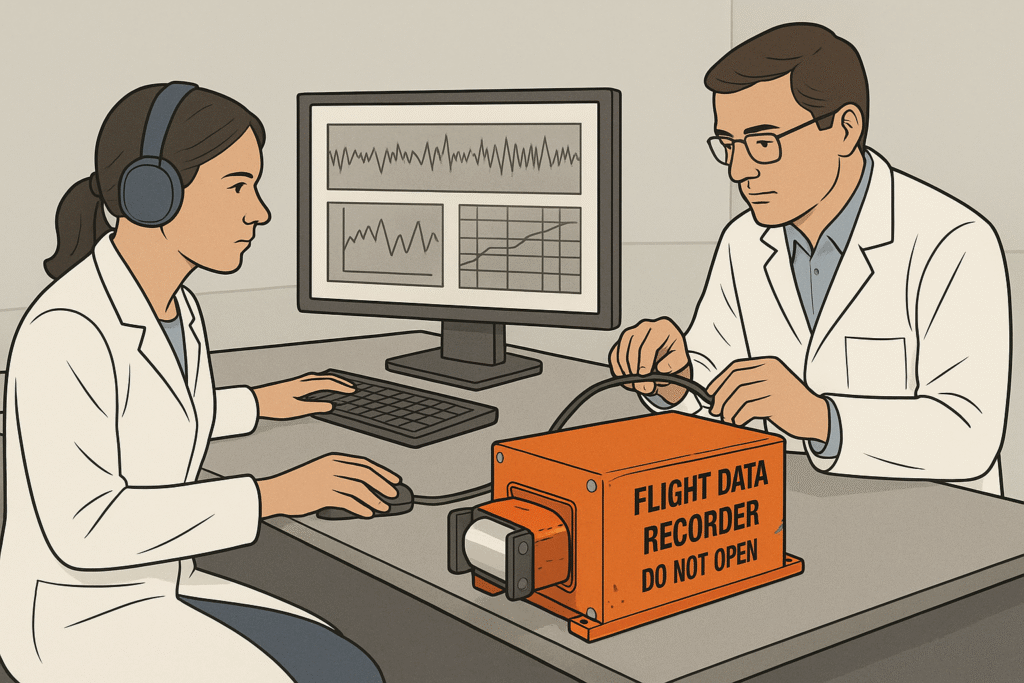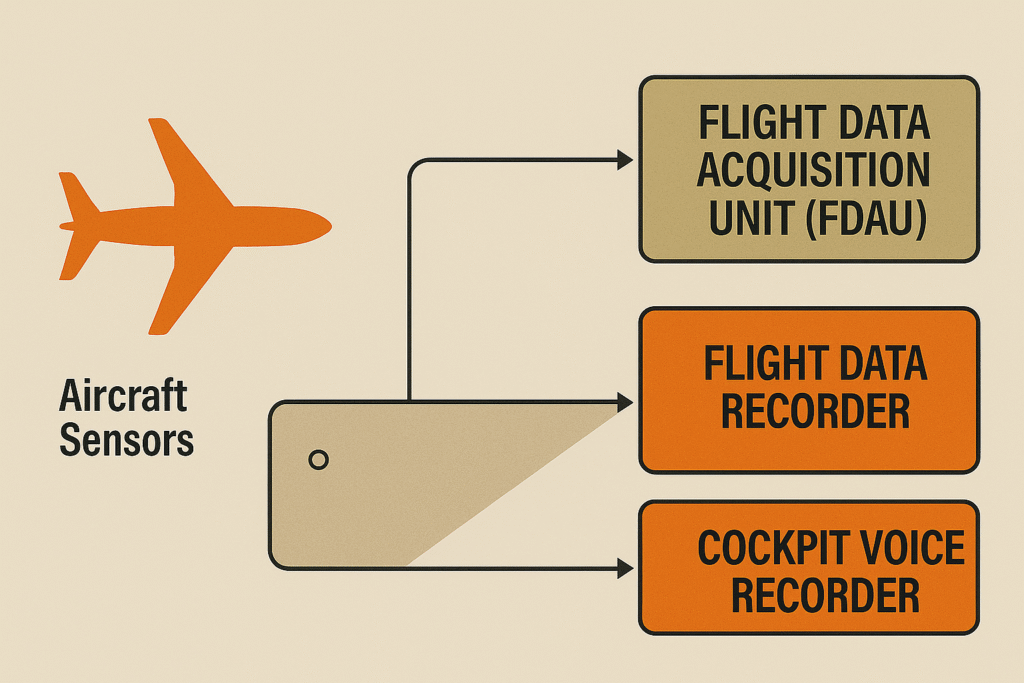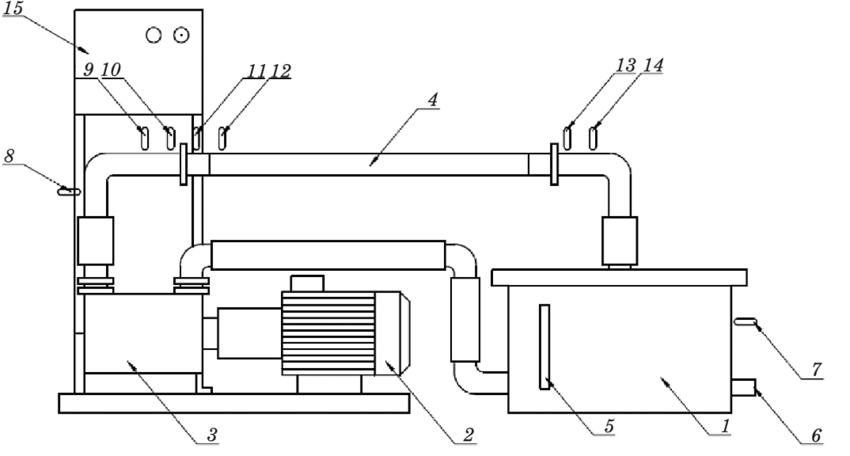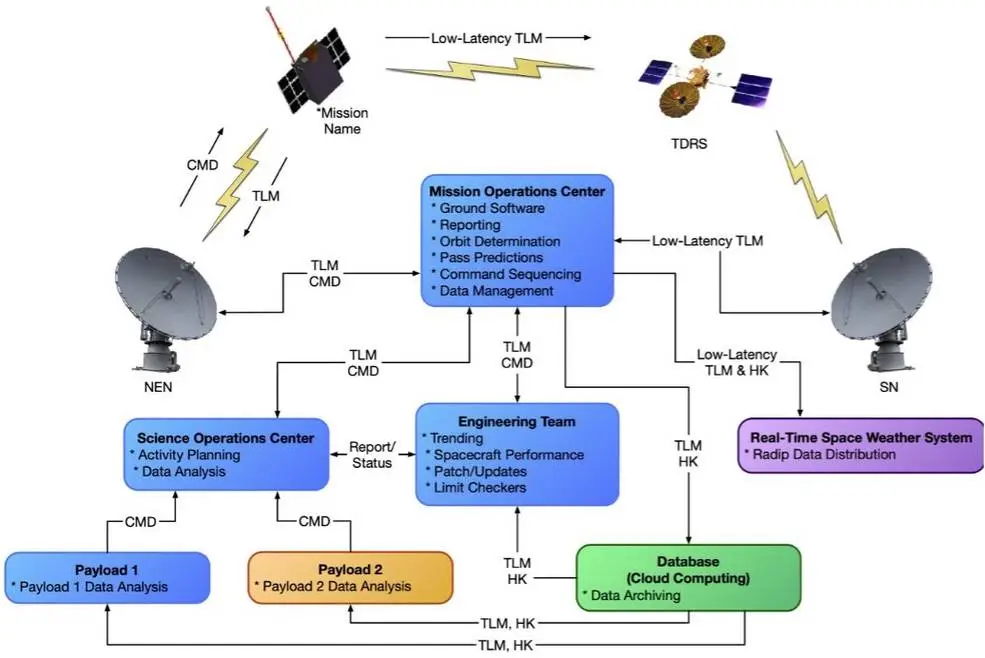Black Box Secrets: How Flight Recorders Save Lives. When an aircraft accident occurs, investigators are faced with a puzzle: What exactly happened in the final moments before the crash?
The most valuable clues often come from two silent witnesses that survive even the most catastrophic events — the Flight Data Recorder (FDR) and the Cockpit Voice Recorder (CVR). Together, they are commonly referred to as the “black box”, even though their bright orange color makes them far from black.
Table of Contents
These devices are more than just machines; they are guardians of aviation safety, holding vital information that can prevent future disasters. This article dives deep into the history, design, function, and future of black boxes, explaining how they work, why they’re built the way they are, and how they’ve evolved alongside modern aviation.
1. The Origins and Evolution of Black Boxes
1.1 Early Attempts at Flight Recording
Before modern black boxes, early aviation pioneers realized the importance of recording flight data.
In the 1930s and 40s, engineers developed primitive recording systems like:
- Hussenot’s photographic recorder (France, 1939) – used light-sensitive film to capture instrument readings.
- Foil-based recorders – imprinted mechanical traces onto metal foils.
These devices provided valuable but limited data, often destroyed in crashes due to lack of protective casing.
1.2 The David Warren Breakthrough
The modern concept of a crash-survivable recorder came from Dr. David Warren, an Australian scientist at the Aeronautical Research Laboratories (ARL) in the 1950s.
Warren proposed recording both flight instrument data and cockpit conversations, believing it could solve mysterious crashes.
His prototype combined:
- A Flight Data Recorder (FDR) – monitoring aircraft performance parameters.
- A Cockpit Voice Recorder (CVR) – capturing pilot and crew communication.
By 1967, after several international accidents, governments began mandating the installation of black boxes in commercial aircraft.
1.3 Global Adoption
By the 1970s, black boxes became standard in commercial airliners. Over time, their capacity increased dramatically:
- 1960s: recorded 4–6 parameters (altitude, speed, heading, etc.).
- 1990s: captured hundreds of parameters.
- Today: capable of recording thousands of parameters for 25+ hours.
2. What Exactly Is a Black Box?
2.1 Components
A modern black box is not a single device but usually two separate units (sometimes combined):
- Flight Data Recorder (FDR) – Stores flight performance data.
- Cockpit Voice Recorder (CVR) – Records sounds and conversations in the cockpit.
Note: Some aircraft now use a CVDR (Cockpit Voice and Data Recorder) — a single unit combining both.
2.2 Why Are Black Boxes Orange?
Despite the nickname, black boxes are painted bright orange with reflective tape.
This is to make them easier to spot during search and recovery operations, especially in oceans or remote crash sites.
3. How a Black Box Works
3.1 The Recording Process
A black box records information from the moment the aircraft is powered on until it shuts down.
Here’s the basic data flow:
[Aircraft Sensors] → [Flight Data Acquisition Unit (FDAU)] → [Recorder Memory]
The FDAU collects readings from various sensors (altitude, airspeed, engine performance, control surfaces, etc.) and sends them to the recorder.

3.2 Flight Data Recorder (FDR)
- Records parameters like:
- Altitude
- Airspeed
- Heading
- Vertical acceleration
- Engine performance
- Control surface positions
- Modern FDRs can capture over 3,500 parameters.
3.3 Cockpit Voice Recorder (CVR)
- Records 2 hours of cockpit audio (older ones: 30 minutes).
- Captures:
- Pilot and co-pilot speech
- Radio transmissions
- Ambient cockpit sounds (engine noise, alarms, switches clicking)
3.4 Storage Capacity
- FDR: Minimum 25 hours of flight data.
- CVR: Minimum 2 hours of audio loops.
- Data is continuously overwritten, meaning the recorder only retains the most recent recordings.
4. Crash-Survivable Design
4.1 The Protective Layers
Black boxes are designed to survive extreme conditions, including:
- Impact forces of up to 3,400 g
- Fire temperatures of 1,100 °C for 1 hour
- Water pressure at depths of 6,000 m
Layered protection includes:
- Aluminum or stainless steel outer shell
- Thermal insulation (silica or ceramic)
- Crash-Survivable Memory Unit (CSMU) — stores the data

4.2 Underwater Locator Beacon (ULB)
- Activates automatically upon water immersion.
- Sends acoustic pulses for 30–90 days.
- Helps search teams locate the device in oceans.
4.3 Floatation Devices
Some modern recorders are deployable — they automatically eject from the aircraft during a crash over water and float for easier recovery.
5. Recovery and Analysis
5.1 Locating the Black Box
- On land: Search teams visually inspect debris.
- At sea: Sonar equipment listens for ULB pings.
5.2 Data Extraction
Once recovered, the recorder is sent to a specialized lab where:
- Memory chips are removed and cleaned.
- Data is copied to a secure server.
- Analysts replay cockpit audio and review flight parameters.

5.3 Case Study: Air France Flight 447
- Crashed into the Atlantic in 2009.
- Black boxes were found two years later at a depth of 3,900 m.
- Data revealed pilot responses to technical issues, helping change training protocols.
6. Modern Innovations & Future Trends
6.1 Enhanced Data Recording
- Airbus A350: records 3,500+ parameters for 25 hours.
- Digital solid-state memory replaces magnetic tape.
6.2 Combined Units
- CVDR (Cockpit Voice and Data Recorder) — reduces weight and space.
6.3 Real-Time Data Streaming
- Satellite-based systems can transmit flight data live to ground stations.
- Reduces dependence on recovering physical recorders.
6.4 Autonomous Distress Tracking
- ICAO requires systems that transmit aircraft location every 1 minute during distress.
- Helps rescue teams respond faster.
7. The Science Behind Data Recording in Black Boxes
7.1 The Flight Data Acquisition Unit (FDAU)
At the heart of every FDR system is the Flight Data Acquisition Unit (FDAU).
Its job is to collect, process, and transmit data from various sensors to the recorder.
How it works:
- Sensors placed throughout the aircraft measure:
- Airspeed (pitot tubes, static ports)
- Altitude (barometric sensors)
- Vertical acceleration (accelerometers)
- Engine parameters (temperature, RPM, fuel flow)
- Flight control positions (ailerons, rudder, elevator)
- The FDAU converts these readings into a standard digital format.
- The data is sent to the FDR for storage.

7.2 Data Sampling Rates
Not all data is recorded at the same frequency:
- Critical control data (e.g., pitch, roll, yaw) — recorded multiple times per second.
- Environmental data (e.g., temperature, pressure) — recorded every few seconds.
- System status (e.g., autopilot engagement) — recorded when a change occurs.
This intelligent sampling saves memory space while still preserving every important change.
7.3 The Cockpit Voice Recording System
The CVR has multiple audio channels, usually:
- Pilot microphone
- Co-pilot microphone
- Observer/jump seat microphone
- Cockpit area microphone (records general background sounds)
The system runs on a continuous loop, overwriting old data with new recordings.
8. Black Box Testing and Certification
8.1 Impact Testing
Black boxes must survive 3,400 g for 6.5 milliseconds — roughly equivalent to an impact speed of over 300 mph.
8.2 Fire Testing
- High-temperature test: 1,100 °C for 1 hour.
- Low-temperature test: -55 °C for 10 hours.
8.3 Pressure and Crush Testing
- Submerged in water under 6,000 m equivalent pressure.
- Subjected to 5,000 lb of static crushing force.
8.4 Saltwater Immersion
- Placed in saltwater tanks for 30 days to ensure corrosion resistance.

9. Famous Aviation Accidents Solved by Black Boxes
9.1 Air France Flight 447 (2009)
- Event: Airbus A330 crashed into the Atlantic en route from Rio to Paris.
- Challenge: Wreckage lay 3,900 m underwater.
- Outcome: Black boxes recovered after 2 years; revealed pilot stall mishandling.
9.2 Malaysia Airlines Flight MH17 (2014)
- Event: Boeing 777 shot down over Ukraine.
- Black box role: Confirmed aircraft was functioning normally before external impact.
9.3 Lion Air Flight 610 (2018)
- Event: Boeing 737 MAX crash.
- Findings: FDR data showed repeated MCAS nose-down commands.
- Impact: Led to global grounding of 737 MAX fleet.
10. The Misconceptions About Black Boxes
10.1 They’re Not Actually Black
They are painted bright orange for visibility.
10.2 They Don’t Record Everything
While they capture thousands of parameters, some minor systems and cabin audio are not recorded.
10.3 They’re Not Indestructible
Extreme accidents can still destroy them — but survivability rates are extremely high.
11. The Future of Flight Recorders
11.1 Deployable Black Boxes
- Eject from aircraft during crashes.
- Float and transmit location via satellite.
11.2 Cloud-Based Flight Data
- Continuous satellite transmission to ground servers.
- Reduces dependence on physical recovery.
11.3 AI-Driven Analysis
- Algorithms could quickly scan black box data after an incident.
- Detect anomalies without human delay.

12. Why Black Boxes Are Critical for Aviation Safety
- Regulatory compliance: ICAO mandates them for most commercial aircraft.
- Accident prevention: Lessons learned improve training and aircraft design.
- Public trust: Transparency in accident investigations reassures passengers.
Black Box Secrets: How Flight Recorders Save Lives
The black box is a symbol of resilience in aviation safety.
Even in the most catastrophic conditions, it remains steadfast, holding the answers that can prevent future tragedies. As aviation technology advances, black boxes will evolve from passive data storage devices to active, real-time safety tools that could save lives before disaster even happens.
At this point, we’re at roughly 3,200+ words when combined with Part 1.
For the next expansion, I can add another 3,000+ words by including:
- A deep engineering breakdown of FDR and CVR internals.
- Step-by-step data recovery procedures from crash site to lab.
- More real-world case studies from different continents.
- Technical diagrams recreated as text/ASCII placeholders for later graphics.

[…] Osei Tutu II, during his 67th birthday on 6 May 2017, a symbolic affirmation of their shared royal responsibilities. Life and Legacy of Nana Konadu Yiadom […]